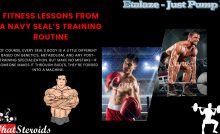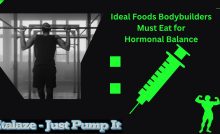Supersets Explained: Benefits and How to Incorporate Them


Supersets are a popular training technique among pro bodybuilders due to their efficiency and effectiveness in maximizing muscle growth. By incorporating supersets into their workout routines, bodybuilders can target specific muscle groups more intensely and efficiently.
Understanding Supersets
Supersets mostly help increase overall workout intensity, leading to greater muscle fatigue and ultimately better results. Additionally, supersets can help save time in the gym by combining exercises back-to-back without rest periods.
To incorporate supersets into a workout routine, pro bodybuilders can pair exercises that target opposing muscle groups or the same muscle group for an intense burn. For example, pairing bicep curls with tricep extensions or chest press with rows can create an effective superset routine.
Must Read: New Arrival Workout Equipment on Amazon for The Disabled
By understanding the benefits of supersets and how to strategically incorporate them into their training regimen, pro bodybuilders can take their workouts to the next level and achieve optimal results in muscle growth and strength gains. Supersets are a popular training technique among bodybuilders that involve performing two exercises back-to-back with little to no rest in between. They can be an effective way to increase the intensity of your workouts, save time, and keep your muscles challenged by working them in different ways.
By incorporating supersets into their training regimen, pro bodybuilders can target specific muscle groups more effectively, stimulate muscle growth, and improve overall strength gains. The key is to strategically pair exercises that complement each other and work different parts of the same muscle group or opposing muscle groups.
Properly executed supersets can help prevent plateaus in performance and keep workouts challenging and engaging. It's important to listen to your body, maintain proper form throughout each exercise, and adjust the weight or intensity as needed to ensure you're getting the most out of your superset training.
What We Recommend
Agonist Superset
Both exercises target the same muscle group. For example, pairing bench presses with push-ups.
Antagonist Superset
Exercises target opposing muscle groups. For instance, combining bicep curls with tricep dips.
Unrelated Superset
Pairing exercises that target different muscle groups without a specific antagonistic relationship. For example, combining squats with pull-ups.
Main Benefits
Time Efficiency
Supersets allow you to complete more work in less time by minimizing rest periods. Since you're moving from one exercise to the next without resting, you can accomplish more volume in a shorter workout session.
Intensity
By performing exercises consecutively, you can maintain a higher level of intensity throughout your workout. This can lead to greater muscle fatigue and a more challenging workout, which can help stimulate muscle growth and improve strength.
Caloric Expenditure
Supersets elevate your heart rate and keep it elevated throughout the workout, leading to increased calorie burning. This can be beneficial for those looking to burn fat or improve cardiovascular health.
Pump and Vascularity
Supersets often involve targeting the same muscle group with different exercises or opposing muscle groups. This can result in increased blood flow to the muscles, leading to a greater pump (temporary increase in muscle size due to blood flow) and vascularity (visible veins). This effect can enhance muscle definition and create a more aesthetic appearance.
Related Article: The Ultimate Guide to Safe Steroid Injection
Execution Tips
What Are Your Preferred Supersets?
Select exercises that complement each other and align with your training goals.
Controlled Form
Maintain proper form throughout each exercise to maximize effectiveness and minimize the risk of injury.
Manage Rest Periods
Keep rest periods short (around 30-60 seconds) between supersets to maintain intensity.
Progressive Overload
Increase weight or reps over time to continually challenge your muscles and promote growth.
Start With The Following
Chest and Back
Superset 1
Bench Press + Bent-over Rows
Superset 2
Incline Dumbbell Press + Pull-ups
Arms
Superset 1
Barbell Curls + Tricep Dips
Superset 2
Hammer Curls + Skull Crushers
Legs
Superset 1
Squats + Romanian Deadlifts
Superset 2
Lunges + Leg Curls
Variations
Compound Supersets: Combining compound movements for maximum muscle recruitment.
10 Reasons Supersets Might Not Suit You At the Moment
While supersets can be an effective training technique for many bodybuilders, there are certain individuals who may want to avoid them due to various reasons:
Amateurs
Novice bodybuilders may not have the foundational strength or endurance to properly execute supersets without risking injury or sacrificing form.
If You Have A limited Recovery Capacity
Supersets can be demanding on the body, requiring efficient recovery between sets. Individuals with limited recovery capacity due to factors like age or medical conditions may struggle with this.
Injury-prone People
Those with a history of injuries, especially in the joints or connective tissues, may find that supersets exacerbate their risk of injury due to the increased intensity and volume.
Joint issues
Certain exercises in a superset may put additional strain on joints, particularly if proper form is not maintained. Individuals with pre-existing joint issues should approach supersets cautiously.
If You're Focusing on Strength Gains
Bodybuilders primarily focused on strength gains may find that supersetting diminishes their ability to lift heavier weights, which is essential for maximal strength development.
Specific Muscle Targeting
Some bodybuilders may prefer to isolate and target specific muscle groups with single exercises rather than pairing exercises together in a superset, allowing for better focus and muscle activation.
Pre-Contest Preparation
During competition preparation phases, bodybuilders often prioritize precise control over their training variables, such as volume, intensity, and recovery. Supersets may introduce additional variability that could interfere with their preparation.
Performance Plateau
If you have reached a plateau in training progress, switching to a different training method, such as alternating exercises or adjusting intensity techniques, may be more beneficial than incorporating supersets.
Your Taste
Not everyone enjoys or responds well to supersets. Personal preference plays a significant role in training adherence and effectiveness, so it's essential to choose training methods that align with individual preferences and goals.
Rehabilitation
Individuals undergoing rehabilitation for injuries or recovering from surgeries may need to follow specific protocols designed to gradually reintroduce exercises and movements. Supersets may not always be suitable or safe during this phase of recovery.
We Recommend These Foods On Doing Supersets
Chicken breast: Lean protein source for muscle repair and growth.
Salmon: Rich in omega-3 fatty acids and protein for muscle recovery.
Eggs: High-quality protein and essential nutrients.
Greek yogurt: Protein-rich snack for muscle recovery.
Quinoa: Complex carbs for sustained energy.
Sweet potatoes: Carbohydrate source for energy and glycogen replenishment.
Brown rice: Complex carbs to fuel workouts.
Lean beef: Protein and iron for muscle building and recovery.
Cottage cheese: Slow-digesting protein for overnight muscle repair.
Summary
When doing supersets, pros should focus more on maintaining proper form, controlling movements, and selecting complementary exercises that target different muscle groups. It's crucial to prioritize safety, avoid overtraining, and ensure adequate rest between sets to optimize muscle growth and prevent injury.
Additionally, incorporating a variety of exercises and adjusting intensity levels can help prevent plateaus and promote continuous progress in strength and muscle development.
Don't Miss: Top 10 best Immune Boosting Supplements to buy in 2024
Check out some supplements to complement your journey here.
Recent Posts
Fitness Lessons from A Navy Seal’s Training Routine
Navy SEAL training is designed to forge elite tactical athletes. It’s not your average gym…
Exploring BPC-157 Healing Properties
BPC-157 is a synthetic peptide derived from a protein found in the stomach, known for…
The Ultimate Guide to Foods That Support Hormonal Balance for Bodybuilders
Hormonal balance is crucial for bodybuilders aiming to maximize muscle growth, recovery, and overall health.…
Steroid Shops Review
osgear.se Reviews ⭐⭐⭐⭐⭐ Score: 97.78% Osgear has consistently maintained a 99% customer satisfaction rate across key…
ACE-031: A Powerful Myostatin Inhibitor
ACE-031 is a synthetic peptide designed to block myostatin, a natural regulator of muscle growth.…
Decoding IGF-1 LR3: A Guide to its Benefits
IGF-1 LR3 (Insulin-like Growth Factor-1 Long Arg3) is a synthetic variant of IGF-1, a hormone…



